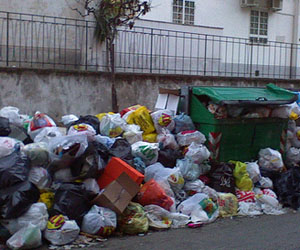
Photo by by lyzadanger, courtesy Wikimedia Commons
Americans, obviously, are eating more than ever before. A new study suggests we’re also throwing away more than ever before. About 50 percent more per person since 1974.
According to the new calculations, food waste contributes to greenhouse gas emissions in the form of methane and CO2 from decomposing food. In the US, it also accounts for:
- More than one-quarter of total freshwater use
- Some 300 million barrels of oil a year (~4 percent of total American oil consumption)
Until now, studies of food waste have depended on interviews with consumers and inspections of garbage. Neither is particularly accurate.
In this study, researchers analyzed the amount of food consumed by tracking average body weight in the US from 1974 to 2003. They assumed that exercise levels hadn’t changed in that period (an admittedly conservative approach). They compared these data with estimates of the total food available in the US as reported by the USDA to the Food and Agriculture Organization of the UN.
The difference between calories available and calories consumed (what the researchers call the missing mass of American food) equals food wasted. Here’s how it breaks down per person per day in 2003:
- 3750 calories available
- 2300 consumed
- 1450 wasted
That’s 39 percent of the American food supply that is never consumed by human beings. Multiply the individual waste by 300 million Americans and you get enough to feed the people of the Philippines.
The 39-percent estimate significantly exceeds the 27-percent estimate of the USDA, based on consumer and producer interviews.
The new study is out of the Laboratory of Biological Modeling, National Institute of Diabetes and Digestive and Kidney Diseases, in Maryland. The paper is open access at PLoS ONE.
A little something to chew on as we head to Copenhagen.
















